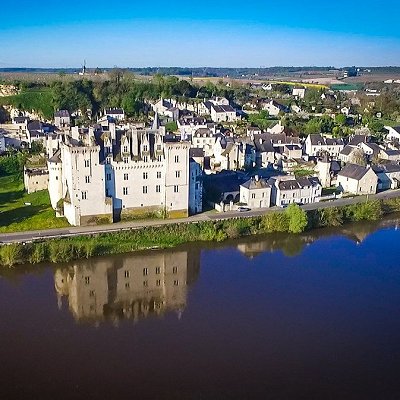
Like us on Facebook
PLACE NAMES


 
|
|
Montsoreau
|
 |
|
Montsoreau is a commune of the Loire Valley in the Maine-et-Loire department in western France on the Loire, 160 km (99 mi) from the Atlantic coast and 250 km (160 mi) from Paris. The village is listed among The Most Beautiful Villages of France (French: Les Plus Beaux Villages de France) and is part of the Loire Valley UNESCO World Heritage Site.
Montsoreau was identified under the name Restis (rope or fishnet) at the end of classical antiquity as a port on the Loire at the confluence of the Loire and the Vienne. It has taken its name Mount Soreau (Mont Soreau) from a rocky promontory situated in the riverbed of the Loire and surrounded by water on top of which was built a fortress in 990. There have been three major buildings on this promontory, a Gallo-Roman temple or administrative building, a fortified castle, and a Renaissance palace.
Montsoreau was, until the seventeenth century, a center of jurisdiction and the seigneury of Montsoreau stretched from the river Loire to Seuilly-l'Abbaye and Coudray castle in the south. After the French Revolution, the exploitation of a building stone, the tuffeau stone, abruptly increased its population of 600 inhabitants to more than 1000, maintained during the first half of the nineteenth century. This stone, easy to work, was gradually exhausted, and the population decreased to stabilize again around 600 people. Montsoreau then concentrated its activities on agriculture, wine and river trade until the end of the nineteenth century. During the Twentieth century, Montsoreau has seen river trade replaced by terrestrial trade and the rise of a tourism economy.
Montsoreau has a remarkable and listed heritage with historical, urban, natural and architectural dimensions. Montsoreau has some architecturally noteworthy buildings in a very wide range of style over a long period of time. From underground living to the château de Montsoreau one of the most famous châteaux of the Loire Valley and the only one entirely dedicated to international contemporary art. Although the construction of the Montsoreau bridge at the beginning of the 20th century completely altered the link the village had with the river, it is nonetheless a technical challenge and a major architectural project that has modernized Montsoreau. It remains nowadays one of the longest bridges in France.
Places of Inerest include:
- La Pierrelée: The Pierrelée dolmen is a prehistoric megalithic construction, consisting of blocks of stone partly covered by a tumulus. Its use is uncertain, it could have been a burial place, but also a dwelling.
- Saint-Pierre de Rest Church: Inscribed in 1952, is a Twelfth, thirteenth and eighteenth century church formerly built in the Loire River bed. Saint-Peter is the patron saint of fishermen.
- Château de Montsoreau: Classified in 1862 like Château de Fontainebleau, Les Invalides and Château Gaillard. Only 57 châteaux on this second list established under Prosper Mérimée supervision.
- House fifteenth century (Quai de la Loire): Inscribed in 1952, the staircase tower and the north facade have been listed.
- House seventeenth century (Quai de la Loire): Inscribed in 1952, the exterior staircase and the south facade have been listed.
- House sixteenth century (Rue Joan of Arc): Inscribed in 1926, the fireplace of the sixteenth century has been listed.
- Windmill of the Trench: Inscribed in 1978, is a polygonal eighteenth-century windmill.
 Feel free to Email me any additions or corrections Feel free to Email me any additions or corrections
LINKS AVAILABLE TO YOUR SITE
| | |





